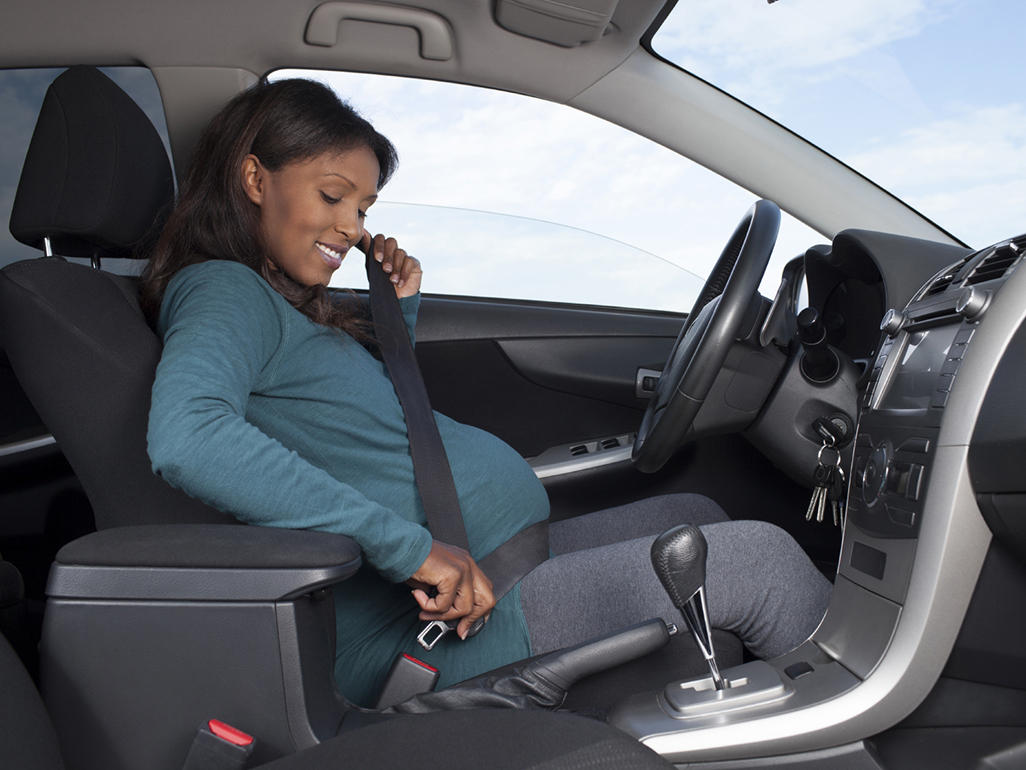- Empty cart.
- Continue Shopping
A Guide to Safe Driving Practices for Pregnant Women

Pregnancy is a remarkable and transformative journey, but it comes with its own set of considerations, including how to stay safe while driving. As your body undergoes changes during pregnancy, it’s important to adapt your driving habits to ensure both your safety and the safety of your unborn child.
1. Seat Belt Safety
One of the most critical aspects of safe driving during pregnancy is proper seat belt use:
- Wear your seat belt: Always wear your seat belt and ensure it’s positioned correctly. The lap belt should be snugly positioned below your belly, across your hips, and not on or above your belly. The shoulder belt should cross your chest and go between your breasts.
- Adjust for comfort: If the seat belt is uncomfortable, consider using a seat belt adjuster or cushion designed for pregnant women. These can help distribute pressure more evenly.
- Check for recalls: Ensure that your car’s seat belts are not subject to any recalls and are in good working condition.
2. Proper Seating Position
Choosing the right seating position can make a significant difference in your comfort and safety while driving:
- Position your seat: Adjust your seat to a comfortable but safe position. You should be able to reach the pedals with ease while maintaining a slight bend in your knees.
- Steering wheel placement: Position the steering wheel so that it’s at least 10 inches from your chest. This reduces the risk of injury to you and your baby in the event of a collision.
3. Frequent Breaks and Stretching
Long drives can be taxing during pregnancy, so plan for regular breaks:
- Take breaks: Plan stops along your route for restroom breaks, leg stretching, and short walks. This helps reduce the risk of blood clots and eases discomfort.
- Stay hydrated: Drink plenty of water to stay hydrated, especially during long drives. Dehydration can worsen pregnancy discomfort.
4. Avoid Fatigue
Fatigue can impair your focus and reaction time while driving. Here’s how to prevent it:
- Get enough rest: Prioritize rest and ensure you’re well-rested before embarking on a long drive.
- Limit driving hours: Try to drive during daylight hours when visibility is better.
5. Mind Your Diet
Pregnancy cravings are common, but it’s essential to be mindful of your diet while on the road:
- Pack healthy snacks: Keep nutritious snacks on hand to satisfy cravings and keep your energy levels stable.
- Avoid heavy meals: Large meals can make you feel sluggish. Opt for lighter, more frequent snacks or meals.
6. Adjust for Comfort
Pregnancy can bring physical discomfort, so make your car as comfortable as possible:
- Cushions and support: Use cushions or back supports to alleviate back pain and provide additional comfort.
- Adjust the climate: Keep the car’s interior temperature comfortable. If you’re driving in hot weather, use air conditioning, and if it’s cold, make sure the heater is set at a comfortable level.
7. Plan for Emergencies
While no one expects accidents or emergencies, it’s wise to be prepared:
- Carry essential items: Keep a fully charged cell phone, emergency contact information, and a basic first-aid kit in your car.
- Learn basic car maintenance: Familiarize yourself with basic car maintenance tasks like changing a flat tire and jump-starting a dead battery.
8. Avoid Risky Driving Behaviors
During pregnancy, it’s crucial to avoid risky driving behaviors:
- No distractions: Minimize distractions while driving. Avoid texting, talking on the phone, or fiddling with the radio.
- Observe speed limits: Stick to posted speed limits and drive at a safe speed for road conditions.
- Stay calm: Avoid road rage and aggressive driving. Stress and anxiety can be harmful during pregnancy.
9. Consider Alternative Transportation
If you’re in your third trimester or have a high-risk pregnancy, it may be worth considering alternative transportation options for long trips. Trains, buses, or air travel might be more comfortable and convenient.
10. Consult Your Healthcare Provider
Before taking any long trips during pregnancy, consult your healthcare provider. They can provide specific advice based on your unique circumstances, including any medical conditions or complications.
In conclusion, safe driving during pregnancy is essential for both you and your baby. By following these tips and making adjustments to your driving habits, you can enjoy a smooth and secure journey as you embark on this incredible chapter of your life. Remember that your health and safety should always be the top priorities, especially during this transformative period.








